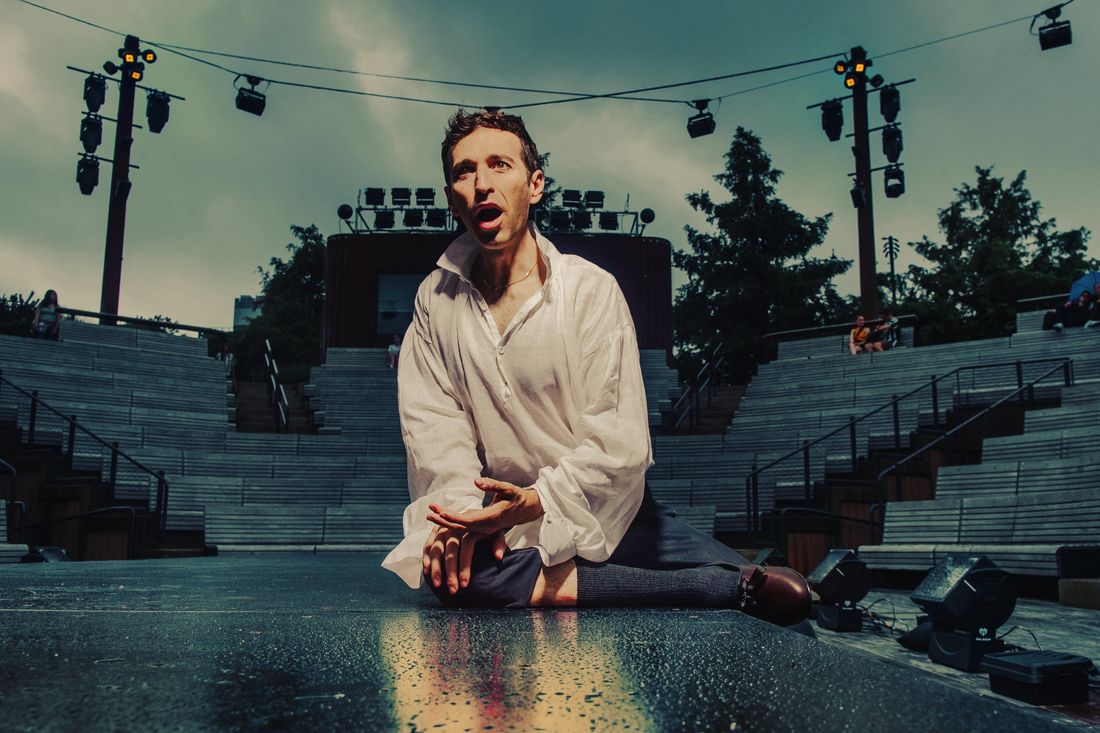
Anthony Roth Costanzo, 42, is a rarity in multiple ways. A star countertenor who sings at the Metropolitan Opera and sometime cabaret performer, he’s also the general director and president of Opera Philadelphia. And through September 22, he’ll be a one-man opera troupe, singing all the leading roles — male and female — of an abridged, rearranged, and kaleidoscopic version of Mozart’s The Marriage of Figaro.
I sang Cherubino [an adolescent boy, usually performed by a mezzo-soprano] when I was 17. Through the sheer effort of singing in Italian, which I hadn’t learned yet, I internalized the whole thing. I would walk around the house singing everyone’s part. Twenty years later, I was doing a show called Only an Octave Apart, with my friend the cabaret artist Justin Vivian Bond, and I performed the duet between the Count and Susanna, “Crudel! Perchè Finora.” I figured out how to switch between baritone and soprano registers, and the audience found it funny and bizarre. So when Zack Winokur [the artistic director at Little Island] called to say, “We’re thinking of doing an opera, something everyone knows but nobody has heard,” I knew exactly what to propose. I loved the idea that even if I was the only person singing, there would be actors lip-syncing so there would be this transference between voice and appearance. As a countertenor, I always look different from the way I sound. People hear me sing and they ask me, “So, what’s your real voice?” And I say, “You just heard my real voice; I’m a countertenor.” But I know what they’re asking: When you sing like a man, are you a tenor or a baritone? Listening to me speak, you’d never know I was a baritone, but I am.
There are one-person versions of Hamlet, but I’m not sure there’s been a one-person version of an entire opera. This one runs 90 minutes. Your favorite ensembles and arias are still there, but we’ve cut out some of the secondary plot lines and streamlined the recitative. There are moments when it sounds exactly like Mozart and others when it sounds like we’re in an International Space Station version of Mozart. I find Figaro to be hilarious, but people don’t always have access to that hilarity. When I’m throwing off a hat or putting on a dress, it becomes that much funnier. There’s a frenetic, ecstatic quality to a one-person execution.
I’ve never done anything this hard. It’s not as if I have one line and then I pause for someone else’s response: I have every line. The saving grace is that, when I switch from head voice to chest voice, they’re different muscles, so each one gives the other a break. I’m starting to be able to get through it, but the question is, Can I get through 18 performances, five days a week?
I want to take the unnaturalness of opera to an extreme and at the same time show how the voice expresses so many different things. We’ve made a list of vocal qualities for every character. The countess is dark but honest. Figaro is rich and burly. As I’m jumping between lines, not only am I thinking about different registers but also about those qualities. That’s really fun.
I’ve been singing at the Met for 13 years. I’ve done Broadway, I’ve done film, and now I’m running a company. The model for opera in our country isn’t working. This Figaro involves a lot of risk — I’m going to have a lot of haters and I’m putting my voice on the line — but there’s also the possibility of innovation both in presentation and audience development. All four leads have moments of truth and pathos, and in those moments, hopefully, people will forget that they’re hearing one person sing everything and just think about the characters. I hope people who have never seen an opera before will think, Wow, opera is so beautiful!
More From This Series
- The Rehearsal Season Two Is Ready for Air
- Comic Francesca D’Uva on How Her Dad’s Death Inspired Her New Show



